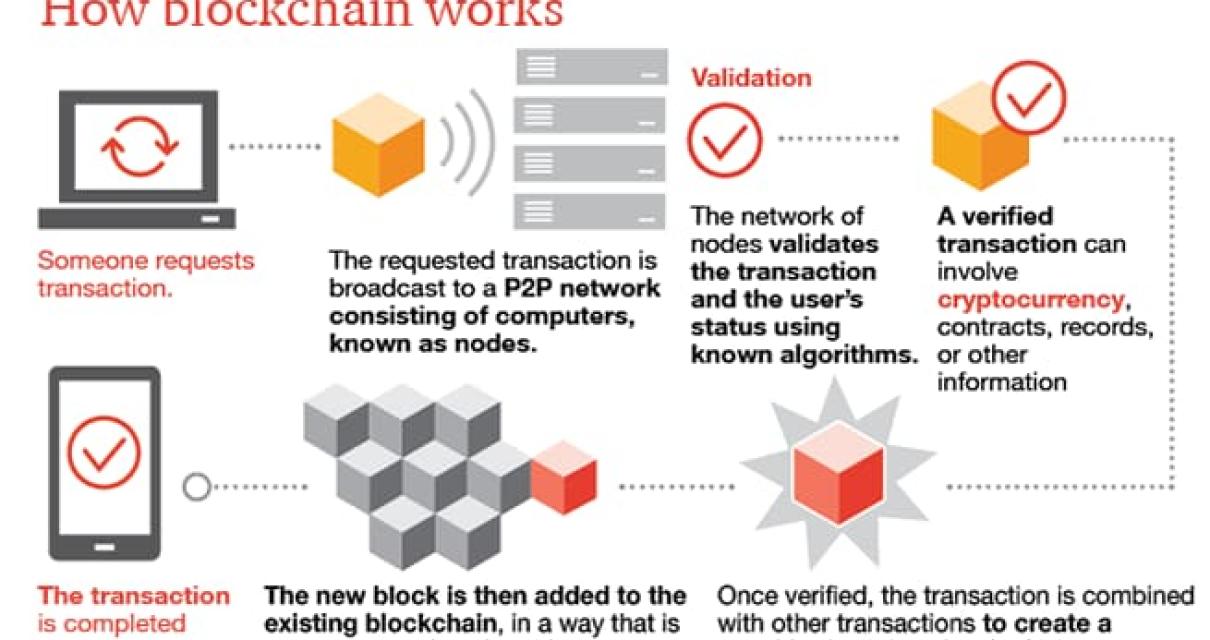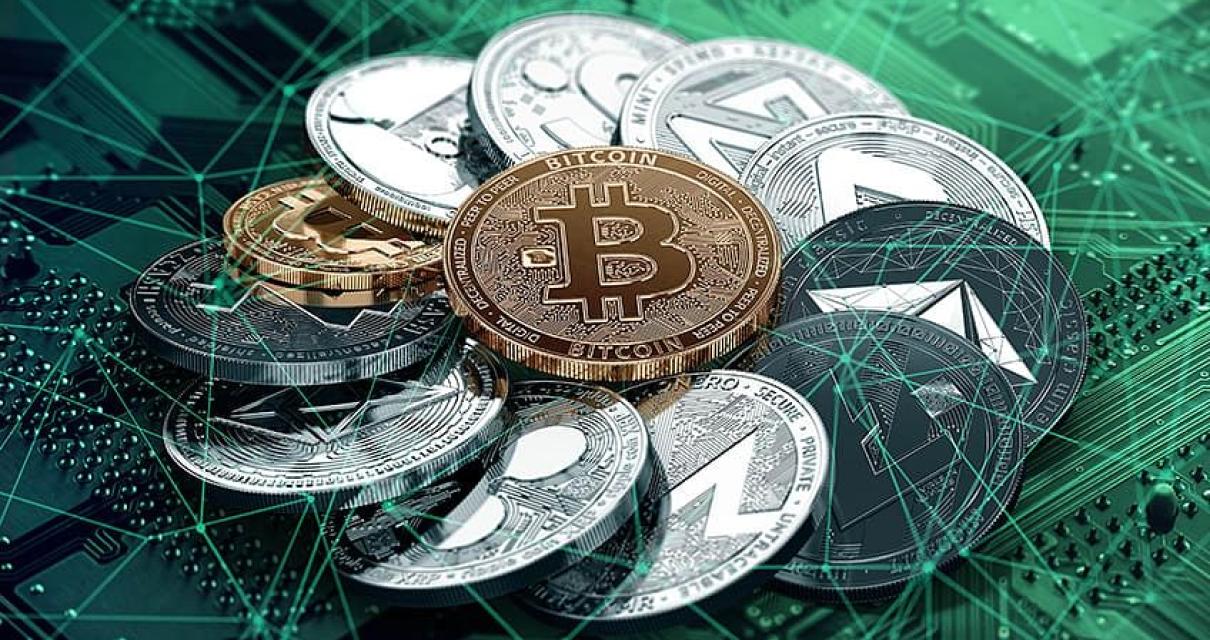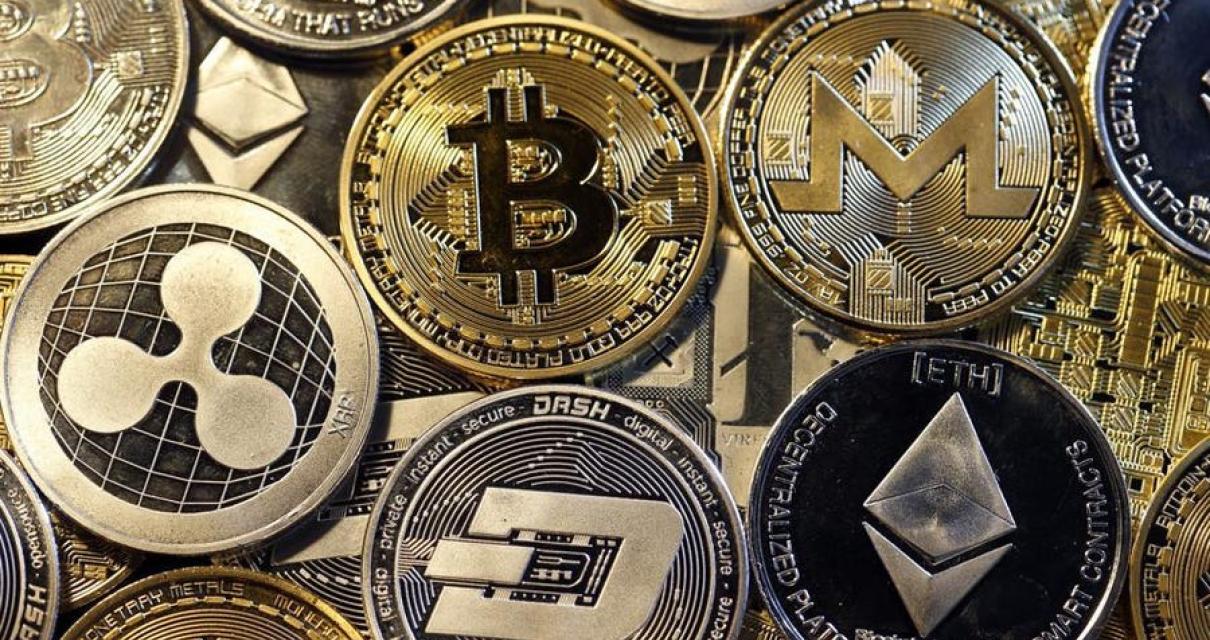What is Blockchain and Crypto?
Blockchain technology and crypto currencies are two of the most talked about technologies today. Blockchain is a distributed ledger technology that allows for secure, transparent and tamper-proof transactions. Cryptocurrencies are digital or virtual tokens that use cryptography to secure their transactions and to control the creation of new units.
A Beginner's Guide to Blockchain and Crypto
What is blockchain?
Blockchain is a distributed database that enables secure, transparent, and tamper-proof transactions. Transactions are grouped into blocks, and each block contains a cryptographic hash of the previous block, a timestamp, and transaction data. Each node in the blockchain network updates its copy of the blockchain, with a new block being added to the chain at a set interval.
How does blockchain work?
Bitcoin and other blockchain-based cryptocurrencies use cryptography to secure their transactions and to control the creation of new units. Transactions are verified by network nodes through cryptography and recorded in a public distributed ledger. Bitcoin nodes use the block chain to distinguish legitimate Bitcoin transactions from attempts to re-spend coins that have already been spent elsewhere.
What is crypto?
Crypto is a term that refers to digital assets or tokens that use cryptography to secure their transactions and to control the creation of new units. Cryptocurrencies are decentralized, meaning they are not subject to government or financial institution control.
What are the benefits of using blockchain?
The benefits of using blockchain include:
Security: Blockchain is secure, transparent, and tamper-proof.
Transparency: All data is publicly accessible and can be verified.
tamper-proof: Transactions are secure and unchangeable.
Efficiency: Transactions are processed quickly and efficiently without the need for a middleman.
What are the risks associated with using blockchain?
The risks associated with using blockchain include:
Inability to scale: Blockchain can only process a limited number of transactions per second. This could lead to delays in processing transactions.
Inability to adopt new technologies: Because blockchain is an open-source technology, it may be difficult to adopt new technologies.

The Benefits of Blockchain and Crypto
There are a few benefits to blockchain and cryptocurrency technology. Chief among these benefits is that it provides a secure, tamper-proof record of transactions. This is particularly important in the context of online transactions, where there is a heightened degree of trust between parties.
Another benefit of blockchain technology is its ability to facilitate global transactions. Because it is decentralized, blockchain technology is not subject to the whims of a single authority. This makes it a viable tool for conducting transactions between countries that may have stringent financial regulations.
Cryptocurrency also has a number of benefits aside from its security and global transaction capabilities. For example, it can be used to purchase goods and services, store value, and make payments. Cryptocurrency also has a low transaction fee, making it an attractive option for both small and large transactions.
Overall, blockchain and cryptocurrency technology offer a number of advantages over traditional payment methods. These include greater security and transparency, lower transaction fees, and the ability to conduct transactions between countries without restrictions.
The Risks of Blockchain and Crypto
Cryptocurrencies are new and untested, and their underlying technology, blockchain, is still in its early stages. There are a number of risks associated with investing in cryptocurrencies and blockchain technology.
1. The risk of price volatility. Cryptocurrencies and blockchain technology are new and untested, and their prices are often highly volatile. This means that you could lose a large amount of money if the value of your coins or tokens falls significantly.
2. The risk of fraud. Cryptocurrencies and blockchain technology are new and untested, which means that there is a risk of fraud. If you invest in cryptocurrencies or blockchain technology without doing your research, you could end up losing your money to scammers or fraudulent projects.
3. The risk of loss of your coins or tokens. If you lose your coins or tokens, you could lose all of your investment. This is particularly risky if you are not experienced with cryptocurrency or blockchain technology.
4. The risk of losing your money if the cryptocurrency or blockchain platform fails. Cryptocurrencies and blockchain platforms are new and untested, which means that they may fail. If this happens, you could lose all of your money.
5. The risk of losing your money if the cryptocurrency or blockchain platform is hacked. Cryptocurrencies and blockchain platforms are new and untested, which means that they may be hacked. If this happens, you could lose all of your money.

The Future of Blockchain and Crypto
The future of blockchain and crypto is bright. As technology continues to develop, more people are starting to understand the potential of blockchain and crypto. This is good news for the industry, as it means that the market is growing and there is more opportunity for people who are interested in investing in it.
There are a number of reasons why the future of blockchain and crypto is bright. One reason is that the technology is still relatively new, so there is a lot of opportunity for it to grow. Additionally, the market is still relatively small, which means that there is a lot of room for it to grow. Additionally, there is a lot of interest in blockchain and crypto, which means that there is a lot of potential for it to become mainstream.
Overall, the future of blockchain and crypto looks very positive. There is a lot of potential for it to grow and become mainstream, which means that there is a lot of opportunity for those who are interested in investing in it.
How to Invest in Blockchain and Crypto
Cryptocurrencies are digital or virtual tokens that use cryptography to secure their transactions and to control the creation of new units. Cryptocurrencies are decentralized, meaning they are not subject to government or financial institution control. Bitcoin, the first and most well-known cryptocurrency, was created in 2009.
To invest in cryptocurrencies, you need a digital wallet and an understanding of how they work. You can purchase cryptocurrencies on exchanges or through “mining” – using your computer’s processing power to solve complex algorithms to create new units of the currency.
There is no guarantee that cryptocurrencies will continue to be profitable, or that they will remain legal. Before investing in any cryptocurrency, be sure to do your own research.
The Pros and Cons of Blockchain and Crypto
Cryptocurrencies are a digital or virtual currency that uses cryptography to secure its transactions and to control the creation of new units. Cryptocurrencies are decentralized, meaning they are not subject to government or financial institution control.
Benefits of using cryptocurrencies include:
International payments: Cryptocurrencies allow for fast and easy international payments.
Security: Cryptocurrencies are secure because they use cryptography to protect against theft and fraud.
Low costs: Cryptocurrencies are low cost compared to traditional methods of payment, such as credit cards.
Disadvantages of using cryptocurrencies include:
Volatility: Cryptocurrencies are volatile, meaning their value can fluctuate rapidly. This can be a disadvantage for people who plan to use cryptocurrencies as a long-term investment.
Intrinsic value: Cryptocurrencies have an intrinsic value, which means that their value is not based on the price of any other commodity. This can be a disadvantage if the value of cryptocurrencies falls below the cost of mining them.

What Experts Are Saying About Blockchain and Crypto
Experts in the blockchain and crypto industry are optimistic about the future of these technologies. Some believe that they could fundamentally change the way we do business, while others believe that they could become the next big thing in finance.
Some experts believe that blockchain and crypto could revolutionize the way we do business. They argue that these technologies could help to streamline and simplify the processes used in many industries. They could also help to reduce costs and make transactions more secure.
Other experts believe that blockchain and crypto could become the next big thing in finance. They argue that these technologies could help to create new opportunities for investors and businesses. They could also help to reduce the costs associated with cross-border transactions.
The Different Types of Blockchain and Crypto
Cryptocurrencies and blockchain technologies have revolutionized how we think about digital transactions. Cryptocurrencies are digital or virtual tokens that use cryptography to secure their transactions and to control the creation of new units. Bitcoin, the first and most well-known cryptocurrency, was created in 2009.
Blockchain is a distributed database that allows for transparent, secure and tamper-proof transactions. Transactions are verified by network nodes through cryptography and recorded in a public distributed ledger called a blockchain. Bitcoin, Ethereum, Litecoin and other cryptocurrencies are based on blockchain technology.
There are three main types of blockchains: public, private and consortium.
Public blockchains are open to anyone who wants to participate and are typically used for transactions that are publicly viewable. Bitcoin and Ethereum are examples of public blockchains.
Private blockchains are only accessible by authorized participants and are used for transactions that are not publicly viewable. Hyperledger Fabric is an example of a private blockchain.
Consortium blockchains are created when a group of organizations agrees to create a shared blockchain. The IBM Blockchain is an example of a consortium blockchain.
How to Use Blockchain and Crypto
The benefits of using blockchain technology are numerous. A blockchain is a distributed database that maintains a continuously growing list of records called blocks. Each block contains a cryptographic hash of the previous block, a timestamp, and transaction data. Bitcoin, the first and most well-known application of blockchain technology, uses a peer-to-peer network to verify and secure transactions.
To use blockchain technology, you need a digital asset that can be used as collateral for a secure Bitcoin transaction. Bitcoin is the most common digital asset used for this purpose. Other digital assets that can be used as collateral include Ether (the native currency of the Ethereum network), Litecoin, and Dash.
To use blockchain technology, you first need a digital asset that can be used as collateral for a secure Bitcoin transaction.
To use blockchain technology, you first need a digital asset that can be used as collateral for a secure Bitcoin transaction. Bitcoin is the most common digital asset used for this purpose. Other digital assets that can be used as collateral include Ether (the native currency of the Ethereum network), Litecoin, and Dash.
Once you have a digital asset that can be used as collateral, you need to create a wallet. A wallet is a digital account where you can store your digital asset. You can create a wallet using any of the following methods:
1. Use an online wallet service.
2. Use a desktop wallet.
3. Use a mobile wallet.
4. Use a hardware wallet.
5. Use a paper wallet.
Once you have a digital asset that can be used as collateral, you need to create a wallet. A wallet is a digital account where you can store your digital asset. You can create a wallet using any of the following methods:
1. Use an online wallet service.
2. Use a desktop wallet.
3. Use a mobile wallet.
4. Use a hardware wallet.
5. Use a paper wallet.